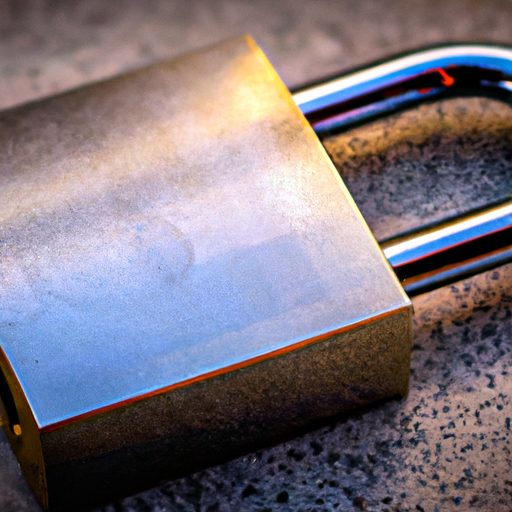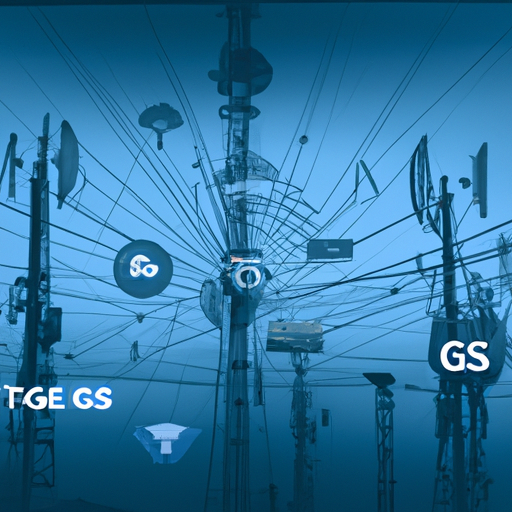What Strategies Are In Place For IoT Device Management?
In the ever-expanding world of the Internet of Things (IoT), the question of how to effectively manage the multitude of interconnected devices seems to arise more frequently. With an increasing number of connected devices playing a crucial role in our daily lives, it becomes essential to understand the strategies that are in place for IoT device management. From robust security measures to seamless connectivity solutions, this article explores the various strategies that can ensure efficient management of IoT devices, keeping you one step ahead in this interconnected world.
Device Identification and Authentication
Unique Device Identification
One of the fundamental strategies for IoT device management is unique device identification. Each IoT device should have a unique identifier assigned to it, such as a MAC address or a serial number. This enables organizations to differentiate between devices and track them individually.
Secure Authentication Protocols
Secure authentication protocols are crucial for ensuring that only authorized devices can access and interact with the network. These protocols, such as OAuth or X.509 certificates, verify the authenticity of devices and users before granting access. By implementing strong authentication measures, organizations can significantly reduce the risk of unauthorized access and potential security breaches.
Role-Based Access Control
Role-based access control (RBAC) is another essential strategy for IoT device management. RBAC enables organizations to grant specific permissions and access rights based on the roles and responsibilities of individuals and devices. This ensures that only authorized users and devices have access to the appropriate resources and functionalities within the network. RBAC enhances security by limiting the potential damage that can be caused by unauthorized or misguided use of IoT devices.
Secure Communication
Data Encryption
Data encryption is a critical strategy for ensuring the confidentiality of information transmitted between IoT devices and the network. Encryption algorithms, such as AES or RSA, scramble the data in a way that can only be deciphered with the appropriate encryption key. This prevents unauthorized parties from intercepting and decoding sensitive information, adding an extra layer of protection to IoT communications.
Secure Protocols (HTTPS, MQTT, CoAP)
Using secure protocols is vital for safeguarding IoT communications from potential threats. Protocols like HTTPS (Hypertext Transfer Protocol Secure), MQTT (Message Queuing Telemetry Transport), and CoAP (Constrained Application Protocol) provide secure and encrypted communication channels between devices and the network. By utilizing these protocols, organizations can mitigate the risk of data tampering or eavesdropping, ensuring the integrity and privacy of their IoT communications.
VPNs (Virtual Private Networks)
Virtual Private Networks (VPNs) are commonly used in IoT device management to establish secure and private communication channels. By creating an encrypted tunnel between the IoT devices and the central network, VPNs protect the data as it traverses through potentially untrusted networks. VPNs also provide additional security by masking the IP addresses of devices, making it harder for malicious actors to identify and target IoT devices.
Firmware and Software Updates
Over-The-Air (OTA) Updates
Over-The-Air (OTA) updates are an essential strategy for maintaining the security and functionality of IoT devices. OTA updates enable organizations to remotely and wirelessly update the firmware and software of their devices. This ensures that devices always have the latest security patches, bug fixes, and feature enhancements without the need for manual intervention or physical access to the devices. OTA updates can significantly reduce the vulnerabilities of IoT devices by promptly addressing known weaknesses and vulnerabilities.
Patch Management
Effective patch management is crucial for keeping IoT devices secure and up to date. Organizations should establish robust processes for identifying and deploying security patches in a timely manner. Patch management involves monitoring for the release of new patches, testing them for compatibility and stability, and deploying them to the devices. By regularly applying patches, organizations can address vulnerabilities and protect their IoT devices from potential exploits and attacks.
Version Control
Maintaining version control of firmware and software is an essential strategy in IoT device management. Version control enables organizations to keep track of the different iterations and updates of their device software. By utilizing version control systems, organizations can easily roll back to previous versions if an update introduces unforeseen issues or vulnerabilities. Version control also helps in troubleshooting and identifying the cause of any issues that may arise with the IoT devices.
Monitoring and Analytics
Real-time Device Monitoring
Real-time device monitoring plays a crucial role in IoT device management. By continuously monitoring the status and performance of IoT devices, organizations can quickly detect anomalies, failures, or security breaches. Real-time monitoring tools can track various parameters, including device connectivity, power consumption, and data transmission rates, providing valuable insights into the health and performance of IoT devices. This enables organizations to proactively address any issues and maintain the optimal functionality of their IoT ecosystem.
Performance Metrics
Measuring performance metrics is vital for assessing the effectiveness and efficiency of IoT device management strategies. By collecting and analyzing performance data, organizations can identify trends, patterns, and potential bottlenecks in their IoT infrastructure. Performance metrics can include parameters such as response time, device uptime, data throughput, and resource utilization. By monitoring and optimizing these metrics, organizations can enhance the overall performance and reliability of their IoT devices.
Anomaly Detection
Anomaly detection is an important aspect of IoT device management, as it helps identify unusual or suspicious behavior that may indicate a security breach or malfunction. By employing machine learning algorithms, organizations can detect deviations from normal patterns and trigger alerts or automated responses. Anomaly detection algorithms can analyze various data sources, including device sensor data, network traffic, and user behavior, allowing organizations to quickly respond to potential threats or abnormalities in their IoT ecosystem.
Data Management and Storage
Data Collection and Aggregation
Effective data management is critical in IoT device management, as it involves collecting and aggregating data from various IoT devices and sensors. Organizations need to establish robust systems for efficiently collecting the vast amounts of data generated by IoT devices. This can involve techniques such as data routing, filtering, and compression to optimize data transmission and storage.
Data Governance and Privacy
Protecting the privacy and confidentiality of IoT data is of utmost importance in device management strategies. Organizations must establish comprehensive data governance policies that define how data is collected, stored, processed, and shared within their IoT ecosystem. These policies should address concerns such as data ownership, consent, access control, data retention, and compliance with relevant data privacy regulations.
Cloud and Edge Storage Solutions
Choosing the right storage solutions is key to effectively managing IoT device data. Organizations can leverage both cloud and edge storage solutions depending on their specific needs. Cloud storage provides scalability, flexibility, and centralized management for large-scale IoT deployments. Edge storage, on the other hand, allows for low-latency data processing, reduced bandwidth usage, and improved reliability by storing data closer to the source. A combination of both cloud and edge storage solutions can provide a balanced and efficient approach to IoT data management.
Device Provisioning and Onboarding
Automated Device Enrollment
Automated device enrollment simplifies and streamlines the process of provisioning new IoT devices onto the network. By leveraging technologies such as zero-touch provisioning or enrollment codes, organizations can automate the device registration and authentication process. This reduces the burden on IT teams, speeds up the onboarding process, and ensures consistency and accuracy in device provisioning.
Provisioning Protocols (TR-069, OMA-DM)
Provisioning protocols, such as TR-069 (Technical Report 069) or OMA-DM (Open Mobile Alliance Device Management), provide standardized methods for configuring and managing IoT devices. These protocols enable organizations to remotely provision and manage devices, including tasks such as firmware updates, configuration changes, and remote diagnostics. By utilizing provisioning protocols, organizations can ensure consistent and efficient device management across their IoT ecosystem.
Device Credential Management
Effective management of device credentials, such as passwords or cryptographic keys, is crucial for IoT device security. Organizations should implement robust processes for generating, distributing, and updating device credentials. This includes practices such as secure storage of credentials, regular password rotation, and strong encryption techniques. By properly managing device credentials, organizations can mitigate the risk of unauthorized access and protect the integrity and confidentiality of their IoT devices.
Risk Assessment and Threat Management
Vulnerability Assessments
Regular vulnerability assessments are essential for identifying potential weaknesses and vulnerabilities in IoT devices and networks. Organizations should conduct comprehensive security audits and vulnerability scans to evaluate the risk exposure of their IoT ecosystem. Vulnerability assessments can identify common security issues such as outdated firmware, weak passwords, or insecure network configurations. By addressing these vulnerabilities, organizations can enhance the overall security posture of their IoT infrastructure.
Penetration Testing
Penetration testing, or ethical hacking, is a proactive approach to identifying security vulnerabilities in IoT devices and systems. By simulating real-world attack scenarios, organizations can assess the resilience of their IoT infrastructure against potential threats. Penetration testing involves the use of specialized tools and techniques to identify vulnerabilities and validate their severity. By conducting regular penetration tests, organizations can address vulnerabilities before they can be exploited by malicious actors.
Intrusion Detection Systems (IDS)
Intrusion Detection Systems (IDS) play a vital role in IoT device management by continuously monitoring network traffic and identifying potential security breaches. IDS can detect suspicious patterns, behaviors, or anomalies that may indicate unauthorized access or malicious activities. By triggering alerts or automated responses, IDS can quickly notify administrators and take appropriate actions to mitigate potential threats. IDS can be deployed at different levels of the IoT infrastructure, from edge devices to central network gateways, ensuring comprehensive threat detection and prevention.
Lifecycle and Asset Management
Asset Discovery and Inventory
Asset discovery and inventory management are essential for maintaining control and visibility over the IoT devices within an organization’s infrastructure. By conducting regular asset discovery scans, organizations can identify all devices within their network and ensure accurate inventory management. This enables organizations to track device status, location, firmware versions, and other relevant information throughout the device lifecycle.
Lifecycle Planning
Lifecycle planning involves defining the stages of an IoT device’s lifecycle, from procurement to disposal, and establishing processes and strategies for each stage. This includes activities such as device deployment, maintenance, updates, and eventual decommissioning. By establishing a comprehensive lifecycle plan, organizations can effectively manage and optimize the usage and longevity of their IoT devices, minimizing operational costs and risks.
End-of-Life Management
Proper end-of-life management is crucial to ensure the secure and environmentally responsible disposal of IoT devices. Organizations should establish processes for securely wiping data, removing or destroying sensitive components, and disposing of devices according to relevant regulations. End-of-life management also involves planning for device retirement and replacement, ensuring a smooth transition and minimizing disruption to the IoT ecosystem.
Integration with IT Systems
Network Integration
Integrating IoT devices with existing IT systems is an important aspect of device management strategies. By seamlessly connecting IoT devices to the enterprise network infrastructure, organizations can leverage existing security mechanisms, monitoring tools, and management systems. Network integration enables centralized management, unified access control, and streamlined operations across both IoT and non-IoT systems.
API Integration
Application Programming Interface (API) integration enables organizations to connect and exchange data between IoT devices and third-party applications or platforms. APIs provide a standardized way for different systems to communicate and share information. By integrating IoT devices with business applications, organizations can leverage the data generated by IoT devices to gain valuable insights, automate processes, and enhance productivity.
Legacy System Compatibility
Many organizations have existing legacy systems or infrastructure that need to coexist with new IoT devices. Ensuring compatibility between IoT devices and legacy systems is a crucial consideration in device management strategies. This may involve implementing gateway devices or middleware solutions to bridge the communication gap between different systems. Legacy system compatibility enables integration, data sharing, and interoperability, ensuring that organizations can fully leverage the benefits of IoT while leveraging their existing investments.
Compliance and Regulatory Considerations
Security Standards (ISO/IEC 27001)
Compliance with industry-recognized security standards, such as ISO/IEC 27001, is an important aspect of IoT device management. ISO/IEC 27001 provides a framework for establishing an information security management system (ISMS). Adhering to this standard enables organizations to systematically manage risks, implement robust security controls, and demonstrate their commitment to protecting IoT device data and infrastructure.
Data Privacy Regulations (GDPR, CCPA)
Data privacy regulations, such as the General Data Protection Regulation (GDPR) and the California Consumer Privacy Act (CCPA), play a significant role in device management strategies. Organizations must ensure compliance with these regulations when collecting, storing, and processing personal data generated by IoT devices. Compliance includes obtaining user consent, implementing appropriate security measures, and providing individuals with control and transparency over their data.
Industry-specific Compliance
Different industries may have specific compliance requirements and regulations that organizations must consider in their IoT device management strategies. For example, healthcare organizations need to comply with the Health Insurance Portability and Accountability Act (HIPAA), while financial institutions must adhere to guidelines such as the Payment Card Industry Data Security Standard (PCI DSS). Understanding and aligning with industry-specific compliance requirements is crucial for ensuring the security, privacy, and legal compliance of IoT devices in various sectors.
In conclusion, effective IoT device management requires a comprehensive set of strategies and practices to ensure the security, functionality, and compliance of IoT devices throughout their lifecycle. From device identification and authentication to compliance with regulations, organizations must implement robust measures to protect data, maintain device integrity, and manage risks. By employing the strategies outlined in this article, organizations can navigate the complexities of IoT device management and maximize the benefits of connected technologies.








